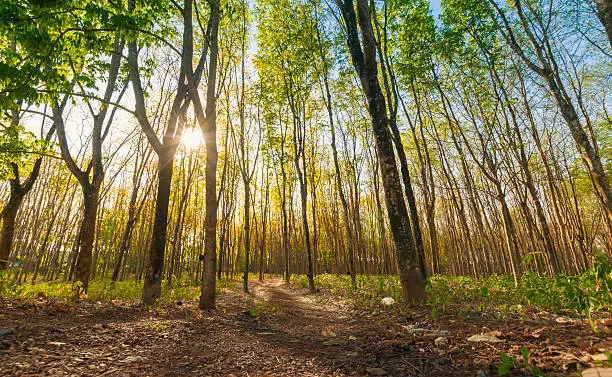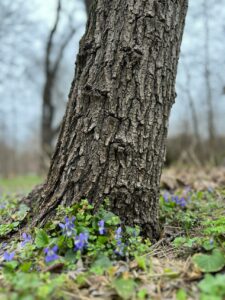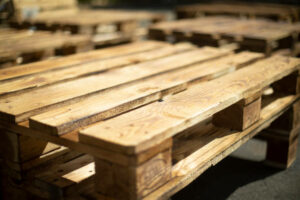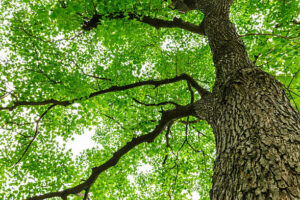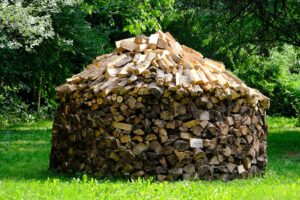Malaysia offers a myriad of hardwoods used to produce export-grade sawn timber/lumber, laminated scantlings, moldings, builders’ joinery, carpentry products, and even furniture. Several of these various wood types and species are certified legal and sustainable.
However, Ratnasingam’s (2018) study shows that the public perceived the industry as having a low-wage economy that relies on foreign workers. This perception could hamper efforts to boost and encourage SMEs in the wood products industry.
Hardwood
Hardwood is a durable and versatile wood that can be used for various structural and interior applications. Malaysia is a major exporter of tropical hardwood logs and sawn timber, as well as veneers and plywood. However, more recently, a higher proportion of the country’s wooden exports have come from value-added products such as moldings, furniture, and wood-based panels.
The most commonly exported hardwood in Malaysia is Dark Red Meranti (Shorea spp), which comes in several species, including Meranti Bukit, Meranti Nemesu, and Meranti Seraya. The species has earned a reputation for quality, and its durability and strength make it the recommended choice for both commercial and domestic applications. Other popular Malaysian hardwoods include Teak (Tectona grandis), Seraya, and Mahogany, which have also been widely used for general construction work.
Pines are another popularly grown and harvested timber in the region. These trees are cultivated and planted on plantations for their speed of growth, utility as a source of lumber, and use in pulp production. The pines are graded according to the Malaysian Grading Rules (MGR), 2009: Select, Standard, Serviceable, and Utility & Merchantable.
The MGR is an electronic system that captures and maintains the data on exporters, sellers, timber processors, jetty operators, and grader applicants. It is also responsible for the collection and dissemination of statistics on domestic prices, currency tabulation, export quota and tariff, and the production of the monthly timber bulletin, MASKAYU. It also provides other relevant information through reports from trade commissions and embassies.
Rubberwood
The Malaysian wood-based industry is a multi-billion dollar sector that produces a variety of timber products such as logs, veneers, plywood, medium-density fibreboards (MDF), and furniture. It is dominated by small-sized companies that have limited knowledge of sustainability practices. This study was conducted to assess the readiness of the Peninsular Malaysia wood-based industry towards sustainability. This was achieved by analyzing the percentage of raw materials consumed in their manufacturing operations. The results of the study show that these companies are not aware of sustainable forest management (SFM) principles.
Also known as plantation hardwood or Malaysian oak, rubberwood is a tropical hardwood grown in forest concessions for latex production. It is a light blonde color and has a fairly straight, dense grain. It is a durable timber and has good resistance to termites, fungi, and bacteria. It is commonly used in building construction, furniture, and furniture making.
The main export markets for Malaysian wood-based products are Asia, including Japan (plywood), China, and India. The US and the EU are also major importers of Malaysian wood-based products, especially plywood and sawnwood. The wood-based industry uses a variety of timber species to produce a wide range of products, from logs and sawn wood to veneers, plywood, and MDF. Despite its popularity, the wood industry must improve its sustainability performance to remain competitive in the global market.
Plywood
Plywood is a type of wood product made from multiple layers of wood veneer. It can be used in construction and is also popular for furniture making. It is lightweight and durable and possesses excellent moisture resistance. It also has good stability and can be used in structural applications. However, it is important to seal the plywood before using it outdoors.
Malaysian plywood is produced mainly in Peninsular Malaysia, with the rest heavy hardwood coming from Sarawak and Sabah. Sawn timber comes from both natural forests and plantations. A large domestic timber manufacturing industry consumes some of the wood while the rest is exported. Several rainforest species are commonly exported, including Merbau, keruing, Kapur, and jelutong.
In addition to plywood, Malaysia also produces other wood-based processed products. These include sawn timber, veneer, panel products, moldings, and builders’ joinery and carpentry. In the future, the country aims to increase the production of other timber species-based products through sustainable forestry management.
The country’s tropical location allows it to grow timber trees with a long rotation period. This makes it a great place to grow high-value woods, such as mahogany and teak. The government has also stepped up efforts to promote the growth of plantations of these tropical species in Sabah, which is a popular export destination for Malaysian hardwoods.
Wood furniture is timeless and has a natural beauty that can last for generations. It is also an environmentally friendly material. Malaysia has several furniture companies that specialize in crafting beautiful, natural wooden pieces. From a Penang-based brand dedicated to celebrating local timber to a company offering one-of-a-kind pieces made from salvaged Malaysian wood, these companies are committed to bringing natural, aesthetic furniture into modern homes.
Veneer
Wood veneers can be used in various ways to enhance a piece of furniture. It is more flexible than solid wood and can withstand changes in temperature and humidity. It is also often more affordable than solid wood because it uses less timber. The wood is cut into thin slices and bonded to other materials to make the veneer. It is available in a variety of colors and species and is a popular choice for furniture.
Chengal is a monospecific hardwood native to Peninsular Malaysia with well-defined sapwood and heartwood that darkens to bright orange-red or deep brown. Its grain is interlocked and has a fine texture. Its natural pin holes are also a characteristic feature of this timber. Its uses include veneer, plywood, and construction lumber.
A wide range of veneers are available from specialist suppliers, including reconstituted wood. This type of veneer is made from fast-growing tropical species and laminated together to form a block. The edges of the block are then sliced, and the resulting veneer is referred to as the “grain.” Its advantages include high quality and durability.
When it comes to shipping and transporting wooden and timber products, proper packaging is important to avoid damage during transit. A good packing and cushioning system can ensure that the product arrives in good condition.
